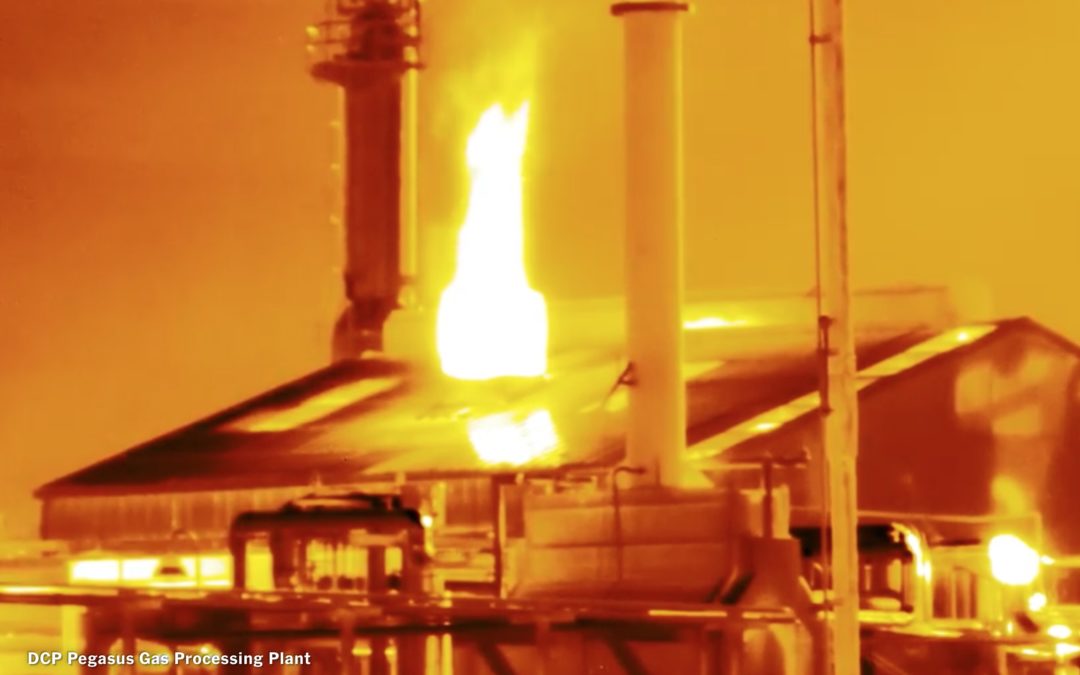SOURCE: New York Times
DATE: November 8, 2019
SNIP: To the naked eye, there is nothing out of the ordinary at the DCP Pegasus gas processing plant in West Texas, one of the thousands of installations in the vast Permian Basin that have transformed America into the largest oil and gas producer in the world.
But a highly specialized camera sees what the human eye cannot: a major release of methane, the main component of natural gas and a potent greenhouse gas that is helping to warm the planet at an alarming rate.
Two New York Times journalists detected this from a tiny plane, crammed with scientific equipment, circling above the oil and gas sites that dot the Permian, an oil field bigger than Kansas. In just a few hours, the plane’s instruments identified six sites with unusually high methane emissions.
Methane is loosely regulated, difficult to detect and rising sharply. The Times’s aerial and on-the-ground research, along with an examination of lobbying activities by the companies that own the sites, shows how the energy industry is seeking and winning looser federal regulations on methane, a major contributor to global warming.
Operators of the sites identified by The Times are among the very companies that have lobbied the Trump administration, either directly or through trade organizations, to weaken regulations on methane, a review of regulatory filings, meeting minutes and attendance logs shows. These local companies, along with oil-industry lobby groups that represent the world’s largest energy companies, are fighting rules that would force them to more aggressively fix emissions like these.
Next year, the administration could move forward with a plan that would effectively eliminate requirements that oil companies install technology to detect and fix methane leaks from oil and gas facilities. By the E.P.A.’s own calculations, the rollback would increase methane emissions by 370,000 tons through 2025, enough to power more than a million homes for a year.
In the air, Times reporters surveyed an area in and around two counties in the heart of the Permian with the help of specialists in methane detection.
The reporters drove to the sites armed with infrared video gear that revealed methane billowing from tanks, seeping from pipes and wafting from bright flares that are designed to burn off the gas, but sometimes fail to do so completely. At one site, a worker walked directly into a methane plume unprotected.
Tim Doty, a former senior official at the Texas Commission on Environmental Quality who is trained in infrared leak detection, examined and helped analyze the findings. “That’s a crazy amount of emissions,” he said. “It takes a little bit of investigative work, but with an infrared camera, you can see it.”
The regulatory rollback sought by the energy industry is the latest chapter in the administration’s historic effort to weaken environmental and climate regulations while waging a broad-based attack on climate science.
Scientists say that, in weakening the rules, the Trump administration underestimates methane’s global climate effects. It also disregards research that suggests methane emissions from oil and gas infrastructure are far larger than previously estimated.
Methane leaks from oil and gas production threaten to erode the advantage that natural gas has over coal in meeting the world’s energy needs, scientists say. When burned for electricity, natural gas produces about half the carbon dioxide that coal does. But if methane is not burned off when released, it can warm the planet more than 80 times as much as carbon dioxide over a 20-year period.
Methane also contributes to ground-level ozone, which, if inhaled, can cause asthma and other health problems.
West Texas methane flight survey:


